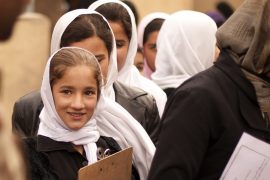The disastrous impact of climate change is clearly visible in Pakistan. The summer rain, heaviest recorded in a decade, caused flooding, affecting more than 33 million –– one in seven –– people, killing at least 1,136 people since the monsoon season began in June. One third of those killed are believed to be children. The death toll is expected to rise.
One third of Pakistan is underwater. Floods have devastated the country, washing away roads, homes and crops, leaving a trail of destruction across Pakistan. Hundreds of thousands of people have been displaced. It is a “crisis of unimaginable proportions.” “Village after village has been wiped out. Millions of houses have been destroyed,” said Pakistan’s Prime Minister, Shehbaz Sharif. Heavy flooding in the Swat Valley has swept away bridges and roads, cutting off villages.
The Government of Pakistan has ordered thousands of people in the mountainous area to evacuate –– but even with the help of helicopters, authorities are struggling to reach those who are trapped. There is simply no place for the helicopters to land.
Agriculture, the main source of food and sustenance, has been badly affected. The country’s rice and vegetable fields are damaged. Almost half of the country’s cotton crop has been decimated.
The cost of rebuilding the damaged infrastructure also poses a significant challenge. A preliminary estimate, says Ahsan Iqbal, the country’s planning minister, is about $10 billion. Pakistan’s government has appealed for financial help from aid agencies, friendly countries and international donors.
-30-
Copyright©Madras Courier, All Rights Reserved. You may share using our article tools. Please don't cut articles from madrascourier.com and redistribute by email, post to the web, mobile phone or social media.Please send in your feed back and comments to [email protected]











